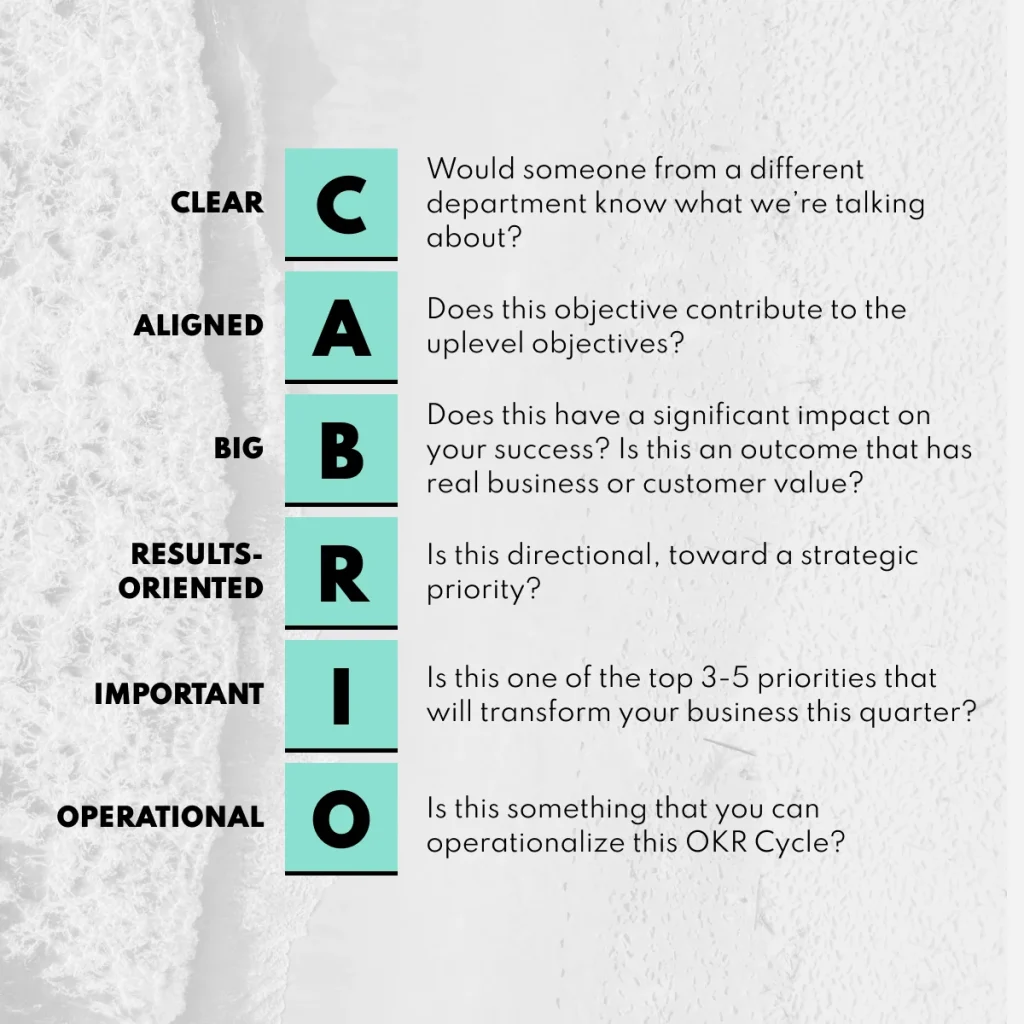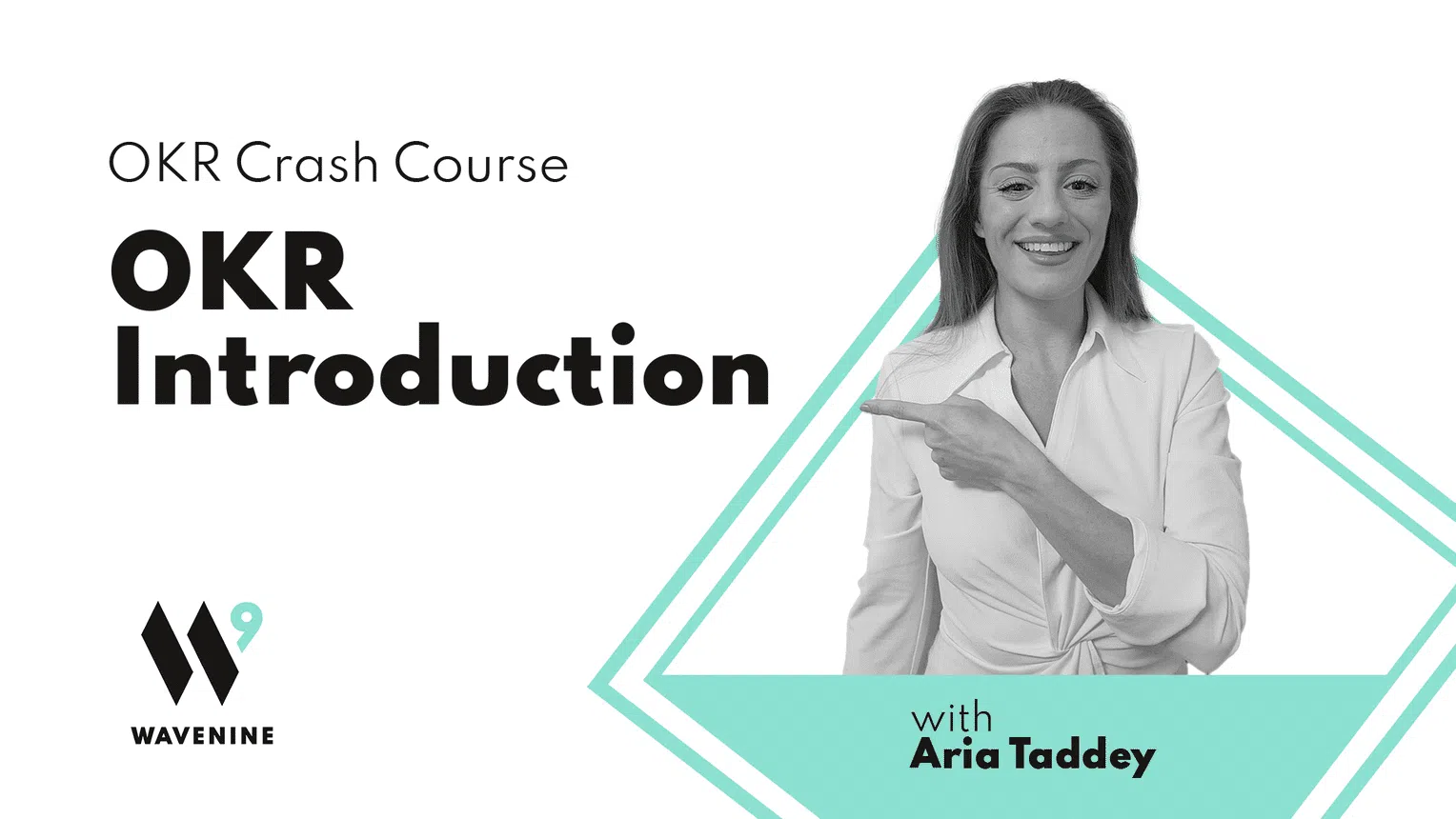How to make sure you’re setting great OKRs
Learn how to craft high‑impact, clear OKRs using the CABRIO framework to drive alignment, ownership, and real results across your organization.

How to make sure you’re setting great OKRs
“My people don’t understand how to contribute to our initiatives, even though we clearly communicate our vision and strategy to the entire org at the beginning of the year.
We even repeat and refine that message every quarter.
But our initiatives still run out of time and rarely actually change anything!”
Signs that you don’t have great OKRs
This statement came from a CEO of a 2,000-employee energy and infrastructure company.
This CEO had joined the company 1.5 years ago, which was the market leader at the time, with a long-tenured staff and a historically proven record of success.
After all, you don’t grow to 2,000 people without a strong business.
Yet, over the years, the company had become slower and slower and new initiatives repeatedly fell flat.
That is not to say that the skills weren’t there.
The company had some of the best experts in the industry on their payroll.
However, every function had developed its own way of operating and working together.
The functional leaders had clearly defined success metrics that they reported to each other in the C-Suite.
And every leader had their own way of managing their people on how to work on them.
“I can see the executive metrics, but I have no idea how we’re actually working on them in the functions.”
Fast forward half a year later, the CEO had decided to start using Objectives and Key Results (OKRs).
They had taken their vision and put it into an OKR structure.
Their vision was to become a more predictable, less risky company by diversifying their markets and knowing in advance what was going to happen, instead of always having to react to market forces.
They reached out to Wave Nine for some OKR consulting.
Well, their OKRs weren’t great OKRs.
Beware of ‘common OKRs’
The executive had set what we often describe as “Common OKRs”, instead of “High-Impact OKRs”.
Common OKRs rarely lead to better outcomes, because they often produce more questions than answers.
- “How are we supposed to do that?”
- “How does that affect me?”
- “How much are we supposed to focus on that and change it?”
If your OKRs don’t answer these questions, they’re most likely not going to change how your organization works.
So, we told this CEO exactly what we tell everyone in our OKR training – to start testing his Objectives using CABRIO.
What is CABRIO?
CABRIO is an acronym we use to test the quality of Objectives.
It ensures that your Objectives are strong, clear, and concise.

If you can answer “yes” to all the questions in the test, then it’s likely you have a great OKR.
With great OKRs, it is far easier to localize them down to relevant teams and departments in OKR workshops.
Roles and responsibilities are made clearer, and it is far easier for KR owners to understand how their work is feeding into the long-range strategy.
The company ‘top-of-house’ OKRs need to be strong, clear, and concise, or else lower levels will just end up confused.
Your organization should live and breathe OKRs, and it all starts at the top. From there, implementing OKRs throughout your organization becomes a lot easier.
Great OKRs can go a long way
If your organization is stagnant, and it’s keeping you up at night, maybe your OKRs aren’t as great or ‘high impact’ as you had thought. By focusing on creating high-impact OKRs, you can unlock the full potential of your organization, foster a sense of ownership and accountability, and achieve your strategic goals more effectively. With the right approach and some OKR training, you can transform your organization, and sleep a little better at night, knowing that your team is working towards a shared and impactful vision.
Other Articles
Get the inside scoop on OKRs
Sign up to our newsletter to get OKR tips, tricks, and insights delivered directly to your inbox!




